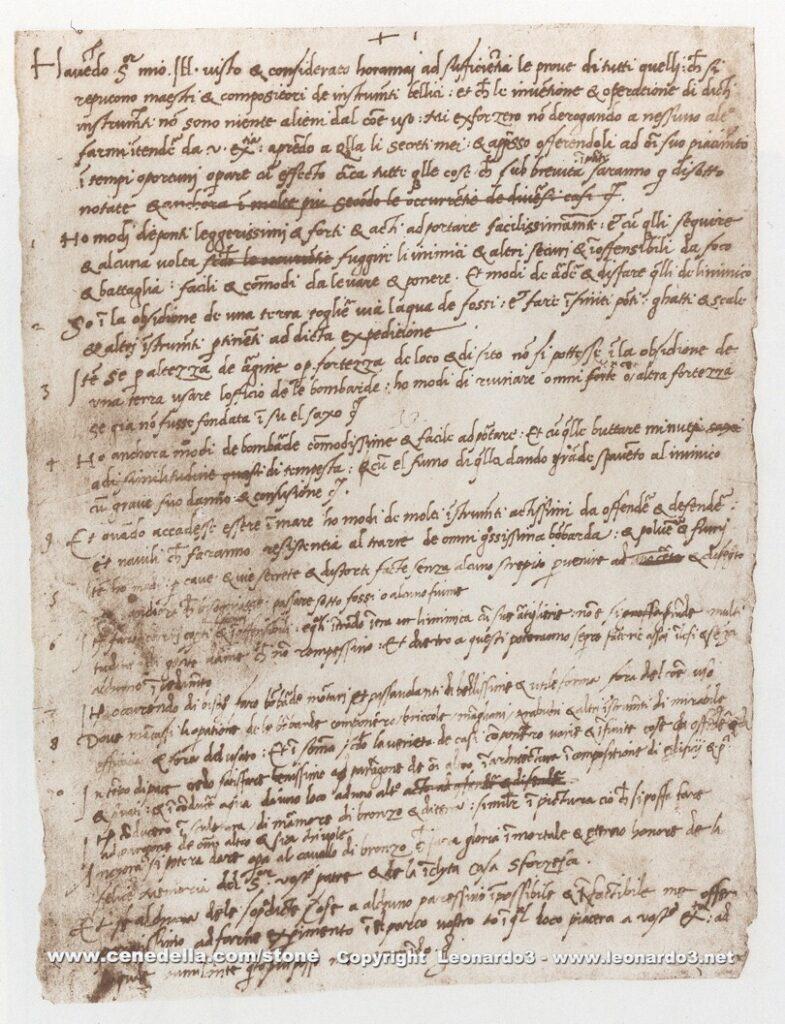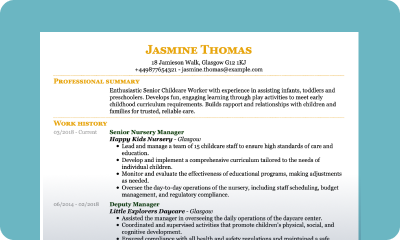The Evolution of CVs: Interesting Facts and Milestones
The concept of the Curriculum Vitae dates back more than five centuries and has since become an essential tool in today’s job application process. Where did the idea of the CV come from? Join us as we explore the history, evolution, and surprising facts about CVs.


Our customers have been hired by: *Foot Note
The CV, or curriculum vitae, is a vital part of the job market and a professional necessity when you’re applying for a job. But have you ever wondered about its origins and development?
In this article, we’ll explore the fascinating history of the CV, from its humble beginnings in the 16th century to the modern document we rely on today. We’ll also explain how the CV has evolved over time and share some interesting facts that might surprise you.
As you explore the fascinating history and evolution of the CV below, make sure to check out our sample CVs and use our CV builder to create your own compelling application.
Where did the idea for the first CV come from?
The term curriculum vitae dates back to the 16th century, when early CVs served as detailed life summaries. They were more than just career resources – but also a means for people to showcase their personal journeys, achievements, and aspirations. Over the centuries, CVs have evolved significantly, adapting to technological advances and ever-changing trends in the job market.
The concept of the first CV emerged during the Renaissance, a time of rapid growth in the arts, sciences, and intellectual pursuits. Interested in human potential, innovators and scholars sought ways to formally present their skills and achievements. This need for a more structured representation of their qualifications and abilities led to the development of documents similar to what we know today as a modern CV.
One of the earliest and most famous Renaissance creators of the CV was Leonardo da Vinci. Known for his talents in both art and science, da Vinci recognised the value of presenting his skills and potential to influential people. As a result, he created a letter detailing his skills, experience, and potential contributions.
Leonardo da Vinci’s CV
Thanks to his remarkable creations like the Mona Lisa, we know that da Vinci got the job. Was it thanks to his impressive CV?
Leonardo’s “CV” was not the standardised document we know today, but rather a carefully written letter. In this letter, he detailed his various skills, including his expertise in military engineering. Although it wasn’t a CV in the modern sense, it laid the foundations for what we now use to present qualifications and achievements during recruitment.
This is what a CV template looked like originally:

And what does it say? Here’s the translation:
“My Most Illustrious Lord,
Having now sufficiently seen and considered the achievements of all those who count themselves masters and artificers of instruments of war, and having noted that the invention and performance of the said instruments is in no way different from that in common usage, I shall endeavour, while intending no discredit to anyone else, to make myself understood to Your Excellency for the purpose of unfolding to you my secrets, and thereafter offering them at your complete disposal, and when the time is right bringing into effective operation all those things which are in part briefly listed below:
- I have plans for very light, strong and easily portable bridges with which to pursue and, on some occasions, flee the enemy, and others, sturdy and indestructible either by fire or in battle, easy and convenient to lift and place in position. Also means of burning and destroying those of the enemy.
- I know how, in the course of the siege of a terrain, to remove water from the moats and how to make an infinite number of bridges, mantlets and scaling ladders and other instruments necessary to such an enterprise.
- Also, if one cannot, when besieging a terrain, proceed by bombardment either because of the height of the glacis or the strength of its situation and location, I have methods for destroying every fortress or other stranglehold unless it has been founded upon a rock or so forth.
- I have also types of cannon, most convenient and easily portable, with which to hurl small stones almost like a hail-storm; and the smoke from the cannon will instil a great fear in the enemy on account of the grave damage and confusion.
- Also, I have means of arriving at a designated spot through mines and secret winding passages constructed completely without noise, even if it should be necessary to pass underneath moats or any river
- Also, I will make covered vehicles, safe and unassailable, which will penetrate the enemy and their artillery, and there is no host of armed men so great that they would not break through it. And behind these the infantry will be able to follow, quite uninjured and unimpeded.
- Also, should the need arise, I will make cannon, mortar and light ordnance of very beautiful and functional design that are quite out of the ordinary
- Where the use of cannon is impracticable, I will assemble catapults, mangonels, trebuckets and other instruments of wonderful efficiency not in general use. In short, as the variety of circumstances dictate, I will make an infinite number of items for attack and defence.
- And should a sea battle be occasioned, I have examples of many instruments which are highly suitable either in attack or defence, and craft which will resist the fire of all the heaviest cannon and powder and smoke.
- In time of peace I believe I can give as complete satisfaction as any other in the field of architecture, and the construction of both public and private buildings, and in conducting water from one place to another.
Also I can execute sculpture in marble, bronze and clay. Likewise in painting, I can do everything possible as well as any other, whosoever he may be.
Moreover, work could be undertaken on the bronze horse which will be to the immortal glory and eternal honour of the auspicious memory of His Lordship your father, and of the illustrious house of Sforza.
And if any of the above-mentioned things seem impossible or impracticable to anyone, I am most readily disposed to demonstrate them in your park or in whatsoever place shall please
Your Excellency, to whom I commend myself with all possible humility.”
The evolution of the CV
Since its origin, the CV has come a long way and its format continues to adapt and vary from country to country. For example, a British CV doesn’t usually require a photograph, whereas international employers, such as those in parts of Europe or Asia, may expect to see that on your job application. When applying in the U.S., it’s important to note the distinction between a resume vs CV, as the formats and expectations can differ significantly.
The way the CV has evolved shows how social and professional standards and requirements have changed over the decades. Let’s take a closer look at these changes and the evolution of the CV:
15th-16th century: First CV ever created
As you already know, the concept of listing achievements and skills in a structured CV format dates back to the Renaissance. At that time, there was an increasing emphasis on individual achievement and people began to feel the need to document their qualifications.
20th century: Standardisation of the CV
During the 20th century, the world saw the introduction of standards and requirements for CVs. Employers began expecting CVs to include sections about people’s education, work experience, and publications. During this period, people also started shifting from handwritten CVs to applications created on typewriters.
Early 2000s: Rise of digital CV
The rapid digitisation led us to move from paper CVs to electronic ones in a very short time. This shift has made it much easier for people to share and update their CVs, allowing them to apply for more jobs in less time.
2010s: Social media and professional platforms
The development of social media, along with the widespread transfer of most social interactions to the online world, contributed to the development of professional career platforms. Platforms such as LinkedIn serve as a digital extension of traditional CVs, offering a comprehensive insight into a candidate’s professional life, with real-time updates, recommendations, and even insights and views in the form of posts.
Today: Traditional vs modern CVs
In the modern era, CVs have evolved into two different formats – the traditional, detailed version, known as the academic CV, and its modern, concise alternative.
In addition, many people now use AI tools such as AI CV Writers to create and tailor their CVs to individual job descriptions. This helps create CVs that are better tailored to each role the inidivual is applying to.
4 Interesting facts about CVs
Before you create your CV, it’s important to learn some facts about job applications and how recruiters analyse CVs. This will allow you to better understand the application process and give you a competitive edge. Let’s dive into four interesting CV facts that could make a real difference during your job search:
Recruiters spend less than 10 seconds on a CV
On average, recruiters spend around 6 to 10 seconds reviewing a single CV. Given how many applications they receive, rapid initial screening is essential. That’s why many recruiters and employers now use applicant tracking systems (ATS) to streamline the process.
ATSs are software programs that scan CVs for specific keywords and job-related information. Their role is to select relevant applications and create a selection for a human to view. To optimise your CV for ATS, make sure you include industry-specific keywords and phrases that match the job description, as this will help your CV stand out to both the system and the recruiter.
An unprofessional email address can hurt your candidacy
An unprofessional email address can potentially undermine your job application. Your email is often one of the first pieces of information employers see and it contributes to the overall impression they form of you as a candidate.
For professional communication, choose a simple, professional address, ideally using your first and last name. If necessary, create a dedicated job search email to maintain a polished image.
CVs with photos are more likely to fail in the UK
In the UK, including a photo on your CV is not standard practice, as it can lead to unconscious bias and distract employers from your qualifications. When writing your CV, simply focus on showcasing your skills, experience, and achievements. If a photograph is required, employers will ask for it separately.
The choice of font matters
The choice of font in a CV matters and can significantly impact how recruiters perceive your application. To create a professional CV, choose a clean font such as Arial, Calibri, or Times New Roman.
Avoid fonts such as Comic Sans or Papyrus, which can look unprofessional. In addition, an ATS-friendly font will ensure that your CV is read correctly by automated systems.
CV of the future
Now that you know how the CV has evolved over time, let’s take a look at what the future holds. Even in recent years, the concept of a job application has shifted drastically – from CVs being mostly a summary of qualifications to becoming a tool for standing out in a competitive job market.
It’s safe to say that key trends such as an increased emphasis on soft skills, integration with professional platforms, and the use of artificial intelligence will play a significant role in shaping the CV of tomorrow. Ultimately, the CV of the future is likely to be even more personalised, engaging and data-driven, offering jobseekers new opportunities to differentiate themselves.
Key takeaways
- The CV has a rich history, dating back to the Renaissance period.
- Leonardo da Vinci created the first known CV, showcasing his skills and innovations in a letter.
- Over time, CVs have evolved from handwritten documents to standardised digital formats.
- Social media and platforms such as LinkedIn have transformed CVs into dynamic, real-time career profiles.
- The future of CVs will likely focus on personalised, data-driven content that incorporates soft skills and multimedia elements.

Olga Knapinska
Content writer
*The names and logos of the companies referred to above are all trademarks of their respective holders. Unless specifically stated otherwise, such references are not intended to imply any affiliation or association with myperfectCV.










